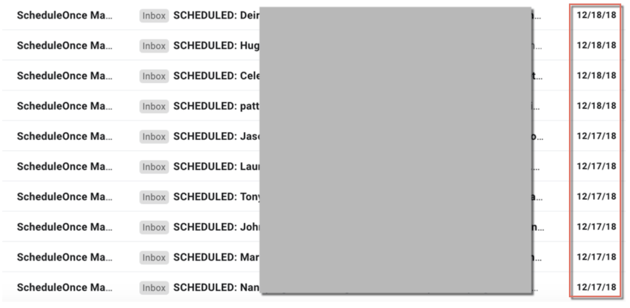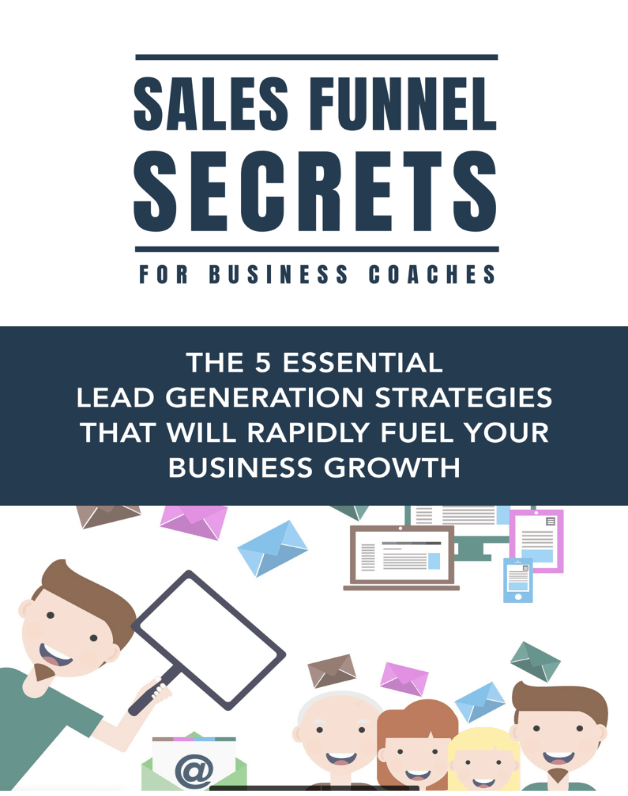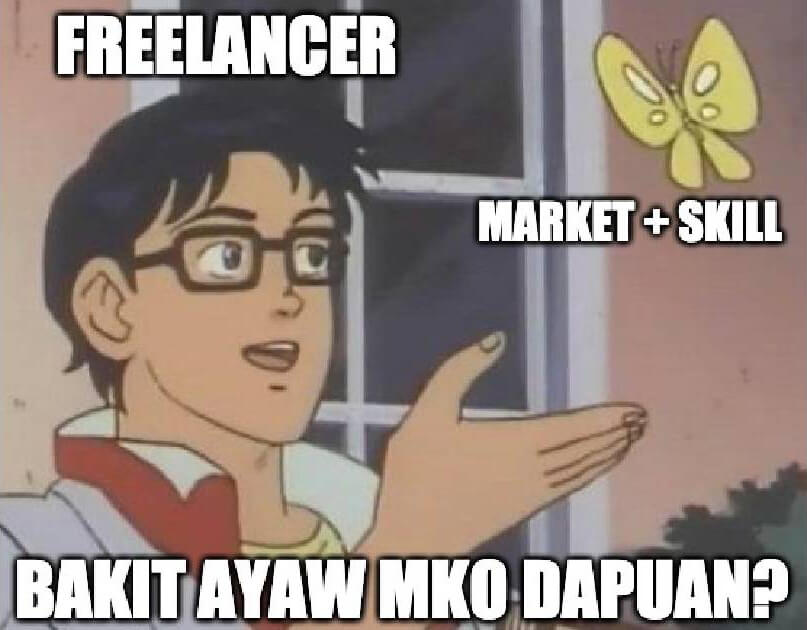Freelancers have unstable income.
Sadly, this is the so-called “truth” that most freelancers have come to accept.
The inconsistent income has long been a challenge that keeps most freelancers on their toes—even those who have been in the industry for years.
And it’s a notion that keeps away part-time freelancers from fully diving into the world of freelancing.
A quick search on Google proves that.

Yet what everyone doesn’t realize is this…
Inconsistent freelancing income is a myth…
A myth that stops freelancers from truly enjoying the very reasons why they decided to freelance in the first place:[*]
- To work for themselves
- To have better work-life balance
- And to even earn more money than they did in their previous full-time work
When done right, freelancing can give you a predictable 6-figure income and beyond month after month after month after month after… err… you get the point.
Imagine this.
You wake up — no alarm clock — and roll over to check Facebook or Instagram on your phone…
You hop out of bed, run through your morning routine then grab breakfast and coffee.
Then you thought to yourself…
“Hmmm… parang gusto kong kumuha ng client ngayon”
So… you send out one email one email — and BOOM!
You get replies from half a dozen prospects who are dying to work with you.
Sounds like something straight from a fairy tale, doesn’t it?
Now some would probably think, “How is that even possible!?”
But I guess the more important question to ask is this…
How can you do this for your own freelance business?
Simple.
IMPLEMENT A WAITLIST FOR YOUR FREELANCING BUSINESS.
Now that you’ve got the answer, you probably have more questions now than when you started reading this post.
Sit back and relax… I got you.
Today, we’re sharing what a client-converting waitlist journey (haba no?) looks like and how you can create your own so you won’t always have to look or apply for jobs.
Let’s dive in.
What is a waitlist funnel?
First, let’s define what a funnel is.
A funnel is simply a set of steps someone needs to go through before they become your client.
That’s it.
Regardless of how many (or how little) steps it takes, if it causes someone to become your client, then you, sir/ma’am, have a funnel.
Take Amazon for example.
Their customer’s buying journey goes as follows:
Visit site > View product > Add to cart > Purchase
The only reason people call it a funnel is because there are usually a lot of people who’d take the first step and the size lessens as they further go along your process.
Just like a funnel.
That said, a waitlist funnel is your ideal prospect’s journey from being a stranger to a client.
How does it work?
You send an email. You get a client.
It’s that simple.
In a nutshell, here’s the vision that John has for the TRIBE.
The TRIBE’s waitlist funnel usually looks like this:
Lead Magnet > Waitlist Landing Page > YOUR LIST > Emails > Client
What you’ll do first is to collect leads (name and email)
Then nurture those same leads by sending emails (at least 3x a week) that shows them how your service can help them.
And once you’re ready to take on clients, send them an email inviting them to get schedule a call with you.
You then close the client either on the call or by sending a proposal.
(Watch this “A Simple Client-Getting Story” video to see how to do this, right around the 1 hour and 53 min mark.)
Then from there, simply grow your waitlist by collecting as many leads as possible through organic efforts (manual outreach) or paid mediums like ads.
The more people you have inside your newsletter/waitlist…
The more prospects you’ll get on a call everytime you send a single email.
Now, it may sound a bit complicated at first but what you’re trying to do here is essentially building a system that collects prospects who are keen to work with you so that when you’re ready to take on another client, it would be as easy as sending a single email.
Now, this all sounds good in theory but the question remains…
Does it work? Take John for example…
When he sends out an email asking his subscribers (the people who downloaded his bribe or his lead magnet), he doesn’t get just one, three, or five people on a call…
In the screenshot above, more than a dozen prospects were scrambling to be the first one to acquire his services!
Would you really be concerned about income unpredictability when you can easily get clients as soon as you send an email out?
And it’s not just John.
TRIBE members like Romer are doing this as well…
He closed this client a month after he put his waitlist funnel up.
How will your freelance business change if you know you have a list of prospects just waiting to work with you at any given moment?
But first…
Fair warning.
Before you invest your blood and sweat into creating this asset, you should already have clarity on your freelance business.
Meaning, you already:
- Chose a market
- Have an “Offer” your market wants
- And a specific service you want to offer clients
So to ensure that you’re getting returns from your efforts, familiarize yourself on the 3 Core Actions To Attract a Steady Stream of High-Paying Clients first.
The learnings from these videos will be the foundation of your freelancing business.
How to create a client waitlist funnel
Now that we got that out of the way, let’s get to the meat.
Step 1. Brainstorm a lead magnet.
Let’s start with the lead magnet.
You’ll offer it in exchange for the email addresses of prospects who are interested in your service.
You’ll need their email addresses because you’re going to nurture and inform them with emails.
Why email?
Because email is probably the easiest and most effective way to get clients.
Nothing else comes close.
Imagine this.
You sent an email out and 3 hours later, you have 5 to 10 prospects booking a discovery call with you.
Plus, creating your own newsletter gives you instant (mini) celebrity status, adding to your influence over your prospects.
Now, before we get ahead of ourselves, let’s pull back a bit and talk about the lead magnet.
Again, a lead magnet is something of value you offer to your prospects in exchange for their names and email addresses.
Here is the lead magnet of Donna, one of the best funnel builders inside the Tribe. She uses this to attract experts who’d like to sell courses, products, or their services.
A lead magnet can be a cheat sheet, guide, a series of videos, infographics, a library (the example above is a guide) —and you’re going to give them away for free..
That’s why they’re called lead magnets. They attract leads. 😅
However, almost everyone already does this.If your lead magnet isn’t something special, 2 things can happen:
- You either won’t get prospects to sign up.
- Or you’ll get them to sign up but they won’t end up as clients.
This means our job isn’t just to create lead magnets just for the sake of creating one—it’s to provide the answer to our prospect’s primary concern.
And if you apply the 10% rule for generating outstanding client results on your lead magnet, you can give insights that allowed your prospects to solve one of their existing problems, the better.
So how do you figure out what lead magnet to create?It all comes back to knowing your market’s pain and challenges..
For example…
Say you’re a social media manager and you want to ‘attract’ prospects that needs help in using social media to either get more fans, leads, or sales.
What do you think are some of the challenges you can help them solve right then and there?
You could offer:
- A free content calendar template to help them schedule social media posts
- A list of 100+ ideas they can write about
- An editable media kit of different content types they can readily use as their own
Now, let me ask you…
If you’re a business owner who’s having problems getting fans/leads/sales, on social media, would you give your name and email so you could solve your specific problem?
Of course! And the most successful marketers today simply does that — create lead magnets that answers their prospects’ biggest pain or challenge.
Here’s a quick list of lead magnet ideas you can do:
The ones underlined above are John’s favorites—they’re easy to create and are proven to convert prospects to clients at a higher rate. So… how would you know if the lead magnet you created is something that would convert random prospects into a raving fan?
Ask yourself these questions:
- Does your lead magnet address their biggest problem?
- Is it short enough so that prospects can consume it rapidly, ideally in under 10 minutes?
- Would you pay for this if it were for sale?
- Are you giving your best advice away for free, no holds barred?
- Does it speak intimately to your exact target market or client?
- Does it have a link to book a call with you?
- Does it include case studies (not necessarily your own) that show proof that your method works?
- Does it have a strong call to action? Are you asking them to book on a call with you? Is it obvious to them?
If you answer YES to all 7 questions, then what you got right there is a killer lead magnet.
Go ahead. Create one.
Now if you’re a newbie and still unsure of your skill, you’re probably scratching your head right now, asking yourself what kind of lead magnet you can create.
Good question.
There’s a quick hack for that.
But first, let me give you some tips.
If you’re a newbie, read up on these resources so you can get your freelancing business up and running in no time:
Now back to the lead magnet hack.
Here’s what you should do.
Go to a digital marketing site or essentially any website that offers similar service that you do.
Like Hubspot.
Your competitors have a large portion of your target audience.
Assuming they are more established than you, they probably have products of their own. If you go to their site, Hubspot for example, you’ll probably find a link to a page of resources at the top menu bar or in the sidebar:
Go ahead and explore what products they have. Learn from their products. This will help you come up with a great lead magnet that your audience will value.
You’ll want to check Ebooks, Guides & More for marketing resources. Research & Reports for hot business trends that you can share with prospects. Or Free Courses & Certifications which you can convert into a lead magnet of your own—just put your own twist to it and don’t copy everything.
Think about it…
If people bought or downloaded these things at a price, do you think they’d give their name and email to have the chance to download it for FREE? 😉
KEY TAKEAWAY: If people are willing to buy it, then they will be more than willing to give you their name and email just to get it for free. It makes a great lead magnet.
And remember, your lead magnet should give the ‘what’ and the ‘why’ —never the ‘how’.
When you already have your lead magnet, next is to create a place where you can house it so prospects can download it.
That place is the waitlist landing page.
Step 2. Create a waitlist landing page.
A landing page is a single web page that appears when you click on any given link. It’s where people ‘land’ after clicking hence the name.
They are either used for selling or lead generation.
For your waitlist funnel, however, we’re focused on landing pages for lead generation.
Here are a bunch of examples:
This is the very landing page John used to build a list of over 3,000 prospects.
This is Dina’s landing page with a video lead magnet on how she was able to help a client generate 52 new leads in 30 days.
And here’s a digital marketing consultant helping his prospects understand the benefits of having a digital marketing consultant for their business…
See a common theme?
They all address their market’s biggest concerns.
And now that you have an idea of what a landing page looks like, it’s time to talk about the important pieces that make it work.
Parts of a simple waitlist landing page
1. Headline
Your headline addresses your client’s pain point. If you’ve done your Single Most Important Question (SMIQ), then there’s a good chance you already know what you should be putting here.
Here’s an example:
CASE STUDY: $127k Launch Revenue In 5 Days
From A Small List of 2,000 People (weight-loss offer)
2. Bullets
Bullets are known as fascinations.
These are usually bulleted points that arouse your prospect’s curiosity about what they’re about to get. Just 3-5 bullet points are enough.
You know what, you don’t even have to rack your brain on coming up with a headline or a set of bullets.
3. Call To Action (CTA)
After reading your headline and bullets, your ideal prospect should be NOW ready to download the thing you promised. So have a big, bold, benefit-driven call to action.Oh, and use colors that draw the eye if you can (like orange, yellow, or red) like this.
Here are Call To Action examples:
- Download NOW!
- Yes! Send me the [insert lead magnet type]!
- Click Here To Get Started!
- Watch It Here For Free!
- Click Here To Download Your [insert lead magnet type]!
Remember, they should be seductive and should not sound like clients are about to do a task like “Subscribe to the newsletter”.
4. Testimonials
To counter the usual prospect objections of “Can this person do what he says?” it’s better if you share proof.
Showing prospects that you have the capability to help them is never a bad thing.
This is optional but highly recommended.
NOTE: For Tribe members reading this, we have a quick hack inside the group on how you can get testimonials even if you haven’t done a single shred of client work. 😉
After this is the Thank You Page.
Most marketers are not optimizing this part of their funnel or worse, they completely forget about this and just directly give their lead magnet away on the next page.
Remember this, your Thank You Page is a precious real estate.
Don’t waste it.
Since we freelancers are service-based entrepreneurs, we should focus on getting them on a call with us.
Why?
Because saying ‘yes’ to your offer changes the new lead’s mindset, moving prospects from unaware that they need someone like you to being interested in building a much deeper relationship.
Now let’s dissect the most successful ‘thank you’ pages.
These are those that get leads on the phone, which is the next important step to working with you.
That’s how you get them as a client.
But here’s the thing.
The lead magnet that you offered earlier may not be enough to get them on a call with you.
At the moment when prospects are on your thank you page, they already have your lead magnet in their inbox.
So give them something more.
Something they need.Something they can use.Something that’ll get them on the phone to you.
Remember how John always says to lead with value?
It’s going to be the reason why prospects will find themselves drawn to you.
Your thank you page should speed up the buying process and allow you to strike while the iron is hot.
Here’s the example from earlier.
While John offered the case study, he’s now offering a bonus call and an opportunity for the prospect to have John go deep into their product, design the campaign, and more…
I don’t know about you but as a business owner, wouldn’t you want more profits for your business? 🤷🏻♂️
Now, here are more Thank You Page examples.
A LinkedIn lead generation specialist offers a quick guide on how to get leads on LinkedIn without the ad spend.
Then there’s Bea, a website funnel designer whose Thank You Page is a notification, testimonial, and client intake page all rolled into one.
There’s really no one-size-fits-all approach on how a ‘Thank You’ page is structured.
But for the sake of simplicity and so as not to have folks confused, here’s a quick template you can follow…
Thanks for requesting [lead magnet name]It’ll be sent to your inbox shortly. And while you wait for your [lead magnet type]…[HEADLINE][Then a screen capture video (just ppt/keynote slides) or a simple text explaining your offer.][CALL TO ACTION]
Now, 2 things can happen after prospects decide to book a call with you.
1. They click on the link and they go straight to your booking link.
If you’re starting out, this style is highly suggested. The good thing about this approach is that you’d get more chances at bat.
The negative?
Some of them won’t be as qualified and may have a hard time paying premium fees.
But if you’re just starting out and you want to get every client that comes your way then this is a no brainer.
2. They click on the link but instead of heading directly to schedule a call, they will be prompted with a questionnaire.
The questionnaire allows you to filter a prospect based on the one you want to work with. It is only AFTER they fill out the form that they’ll be able to book a call with you.
If you’re a seasoned freelancer who’s mindful of how you’re spending your time, do this.
Here’s a quick sample of a questionnaire.
This would allow you to filter folks you want to work with and most importantly — folks whom you do not want to work with
KEY TAKEAWAYS: You don’t need fancy pages to impress clients. You only need a headline that grabs your prospects’ attention, bullets to pull them even more, a Call to Action to lead them to the action that you want them to take, and Testimonials as proof that you can do the job.
Get these 4 elements (headline, bullet, call to action, and testimonials) right and you’re good to go.
But say they were not impressed with your lead magnet and they also didn’t take you up on your offer on your ‘thank you’ page.
What should you do next?
Remember, they’re already your subscribers. Read on to learn the next fitting thing to do next.
Step 3. Nurture your leads.
Kevin Payne, founder of an inbound marketing agency said,
“If you want to get more clients, growing your audience should be one of your top goals.
Email is perhaps the most direct and personal way to reach your target market. When you consistently deliver emails containing high-quality content, your email subscribers are more likely to share with others.
By getting more people to share your content, you help spread the word about you and your business.”[*]
So yes, email is still the most effective marketing strategy used today and it’s far more effective than any medium (including social media) combined.
Check this out:
PLUS, email is the only asset that you can control.
For example, you rely heavily on Upwork for leads.
What will happen if your Upwork account suddenly gets suspended? Or Upwork stops their operation?
So don’t just rely on Upwork or Facebook or Twitter or any other platform, build your own list so you don’t end up like the chef named David when Yelp decided to eliminate all his 5-star reviews on their website.
First order of business after they sign up to your list or newsletter is to send them nurture emails.
Because once they are in your world (a.k.a. your email list), your job is to nurture them and make them realize that you’re the right gal/guy to approach when it comes to solving their problem.
Now if you’re scratching your head again because you have no idea on what emails to send, don’t worry.
We’ve got you.
Here’s a quick sample of a copywriter educating her would-be clients…
Hi Aiza,
Why is your product’s most powerful claim does not always make your most powerful headline?
When I was starting out as a copywriter…
I thought that in order to write a converting sales copy, all I needed was to discover my offer’s greatest angle or benefit…
Then place it on the headline.
But I learned along the way…
That doesn’t work all the time.
While, it may spike people’s curiosity and get them intrigued to read more.
Some people considered it too outlandish that they become doubtful and confused.
And for some people…
They see it as an exaggeration or a hype… instead of a fact.
Keep this in mind.
The effectiveness of your headline is determined by how willingly your market believes, agrees, and accepts your claims.
So in order to be successful at that…
It’s safe to begin your copy with accepted facts and information.
For example:
Instead of starting with…
You can fix your AC in just 5 minutes…
You can begin with…
If your AC is getting you trouble once every week….
Instead starting with…
You can lose weight 30 days from now…
You can begin with…
How would you feel to wear your belt without additional holes on it…
Instead of starting with…
How to generate $100,000 for 15 days without lifting your fingers..
You can begin with…
For some course creators, starting an online course is daunting.
It’s simply talking about your prospect’s world and connecting it with a far more promising world…
Of course, with the help of your new offer.
Your role as a copywriter is to create a bridge between your market’s existing beliefs and your offer’s new claims.
That little by little…
While they slide through your copy…
They find themselves nodding their heads in agreement instead of raising their eyebrows because they can’t get it.
Your role as a copywriter is to make them believe, agree, and accept.
Therefore, begin your copy with a claim or statement that resonates.
April Alen Abion
Now here’s the thing with emails.
Emails should shift your prospects’ beliefs one by one and make YOU the logical choice if they want to get things done.
To pull this off, keep in mind these 5 strategies when doing nurture emails:
1. Focus On ‘Giving Insights’ NOT Information
People already have as much information as they can handle. What they’re looking for is enlightenment and not info.
2. Never Put The Blame On Your Audience
This is a no-no (and yes, even if it’s their fault). Do this even just once and you’ve already lost them as an audience.
3. Always Have A Call To Action
Whether it’s to simply think about a question you asked, watch a video, read a post, or book a call with you, there always has to be a CTA. Think of it as training them to take action.
4. Shoot Down Possible Objections One Email At A Time
Never ever cram too many thoughts in one email. Humans can only effectively absorb one thought at any given time.
5. Aim for at least 3 emails a week
Whatever it is you do, consistency is the name of the game. The more you show you on their inbox, the closer you are to getting them to say, ‘yes’ to your offer.
In case you run out of things you can write on—and I know most will, here are the topics that you can build up on:
- Problems your prospects have based on your research..
- Things your prospects are doing that doesn’t necessarily help them achieve their goals
- All your market’s pre-existing beliefs that are NOT necessarily true, but your market thinks it’s right regardless.
- Things your market may NOT want to do but you think is needed or important to achieve the desired result.
- Symptoms your market has because of the problem you’re trying to solve.
- Your beliefs about the service you provide.
- What does success look like to your prospects? List as many variations as you can.
Do this every now and then so that when the time comes when your client spots go free and you new ones to fill them in…
You can simply send an email inviting prospects to get on the phone with you…
And you can sit back while watching your calendar fill up with leads wanting to talk to you about your service.
KEY TAKEAWAYS: To make sure you’ll never run out of clients ever again, do these:
1. Send nurture emails at least thrice a week.
2. Feed your waitlist funnel with new leads every chance you get.
Now this brings us to probably the most important part of this resource — how to get people to sign up for your list.
Step 4. Build your list.
Again the very reason why we’re creating a funnel is because we just can’t wait and hope that prospects stumble into our profile and express interest to work with us.
As freelancers, we need to put ourselves out there.
Charlene Boutin, a freelance B2B writer for hire, gives out the same reminder…
“However, don’t make the mistake of setting it [lead magnets] up and stopping your outreach work completely!
Your mailing list won’t magically grow if you don’t share your work by other means – social media, guest posting, paid promotions – and chances are you will still need to keep cold pitching to generate a constant stream of high-paying clients.”[*]
So how can we collect the contacts of our prospects?
Well, there are several ways to go about it.
I’ll share with you some simple ways (plus message templates!) so you can build your list below:
LinkedIn Outreach
Thanks for connecting, NAME.I value listening and don’t want to only talk about myself.
I invited you to connect to determine if or how we might be able to arrange a mutually beneficial relationship.To break the ice about myself, I’ll keep it real simple…I help info product owners create an additional six-figure launch revenue using tiny lists. For instance, see this case study where we generated $127,000 in 5 Days from a prospect list of a little less than 2,000 emails.
Click here [insert link to lead magnet]
Warmly,
John
Facebook Outreach
(2-3 days after their response to your SMIQ)
You: Hey John, I remember you telling me about [insert their response/problem].
Anyway, I created a guide that might help solve it. Just let me know if you’d like to get a copy of it.
Them: Sure.
You: Here you go: LINK TO LEAD MAGNET
Let me know if it helps.
Simple, isn’t it?
Building your list is probably the most crucial step of all.
Finding leads is the bloodline of your freelancing business so it should be part of your day to day operation.
Your income depends on this. Every business does. Stop prospecting and you WILL expect zero client months — the very reason why most people think freelancing is unstable.
KEY TAKEAWAY: Prospects magically come to you. A thriving business doesn’t leave their lead generation to chance. Do your outreach consistently.
There’s no such thing as an ‘UNSTABLE’ freelance income… only ‘INCONSISTENT’ freelancers.
Never be at the mercy of inconsistent freelancing income ever again
It’s time we put an end to the “inconsistent income” myth that plagues most freelancers.
You now have the exact formula on how to beat that: Create your Client-Converting Waitlist Funnel and enjoy a predictable, consistent, and high income as a freelancer.
-
Create a lead magnet. Don’t just follow the others and create yet another lead magnet. Create one that provides the answer to your prospect’s primary concern.
-
Build a waitlist landing page. Include a headline that addresses your clients’ pain points. Use bullets to arouse your prospects’ curiosity on what you’re offering. Guide prospects to take action with bold “Call To Action” buttons and seductive text. Add testimonials as proof that you can do what you say. Don’t forget to include a Thank You Page so you can convert them faster.
-
Nurture your prospects. Educate prospects on how they can solve their biggest problems through nurture emails. Then invite them on a call so you can close them as clients.
-
Build your list. This is the most important part of the process—getting people on your list on a regular basis. Consistency is the name of the freelancing game.
I know this post contains the most number of freebie resources for our readers so far.
And if you want to boost your freelancing income and get a supportive group of freelancers you can exchange ideas with, join the Freelance Movement Community.
